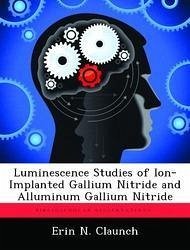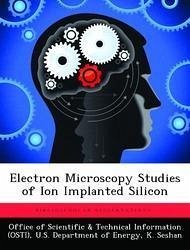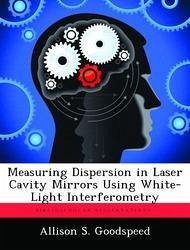
Luminescence Studies of Ion-Implanted Gallium Nitride and Alluminum Gallium Nitride
Versandkostenfrei!
Versandfertig in über 4 Wochen
52,99 €
inkl. MwSt.
Weitere Ausgaben:

PAYBACK Punkte
26 °P sammeln!
Recently, research on the wide bandgap semiconductors such as GaN and AlxGa1-xN became very popular for their applications on various devices. Therefore comprehensive and systematic luminescence studies of Si implanted AlxGa1-xN, Mg doped GaN, and Si+N implanted GaN grown on sapphire substrates by molecular beam epitaxial method have been made as a function of ion dose and anneal temperature. The ions were implanted at 200 keV with doses ranging from 1x10 13 to 1x10 15 cm -2 at room temperature. The samples were proximity cap annealed from 1200 to 1350 [degrees] C with a 500 Å thick AlN cap i...
Recently, research on the wide bandgap semiconductors such as GaN and AlxGa1-xN became very popular for their applications on various devices. Therefore comprehensive and systematic luminescence studies of Si implanted AlxGa1-xN, Mg doped GaN, and Si+N implanted GaN grown on sapphire substrates by molecular beam epitaxial method have been made as a function of ion dose and anneal temperature. The ions were implanted at 200 keV with doses ranging from 1x10 13 to 1x10 15 cm -2 at room temperature. The samples were proximity cap annealed from 1200 to 1350 [degrees] C with a 500 Å thick AlN cap in a nitrogen environment. It has been found that the optical activation and implantation damage recovery are highly dependent upon ion dose and anneal temperature. The results of luminescence measurements on AlxGa1-xN made at 5 K by both photoluminescence and cathodoluminescence show that nearly complete implantation damage recovery can only be obtained after annealing at 1350 [degrees] C. The Si+N implanted GaN showed only a small amount of optical activation in the cathodoluminescence measurements at 1250 to 1350 [degrees] C. Mg doped GaN results indicated that optical activation of the Mg ions was not prevalent, and ion implantation damage might not have been removed completely at 1350 [degrees] C. The results also indicate that current AlN cap protected the implanted AlxGa1-xN layer very well during high temperature annealing without creating any significant annealing damage. These luminescence observations are consistent with the results of electrical activation studies made on these samples.














